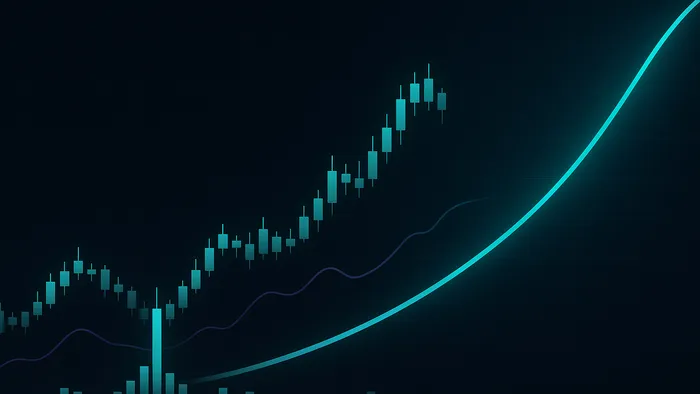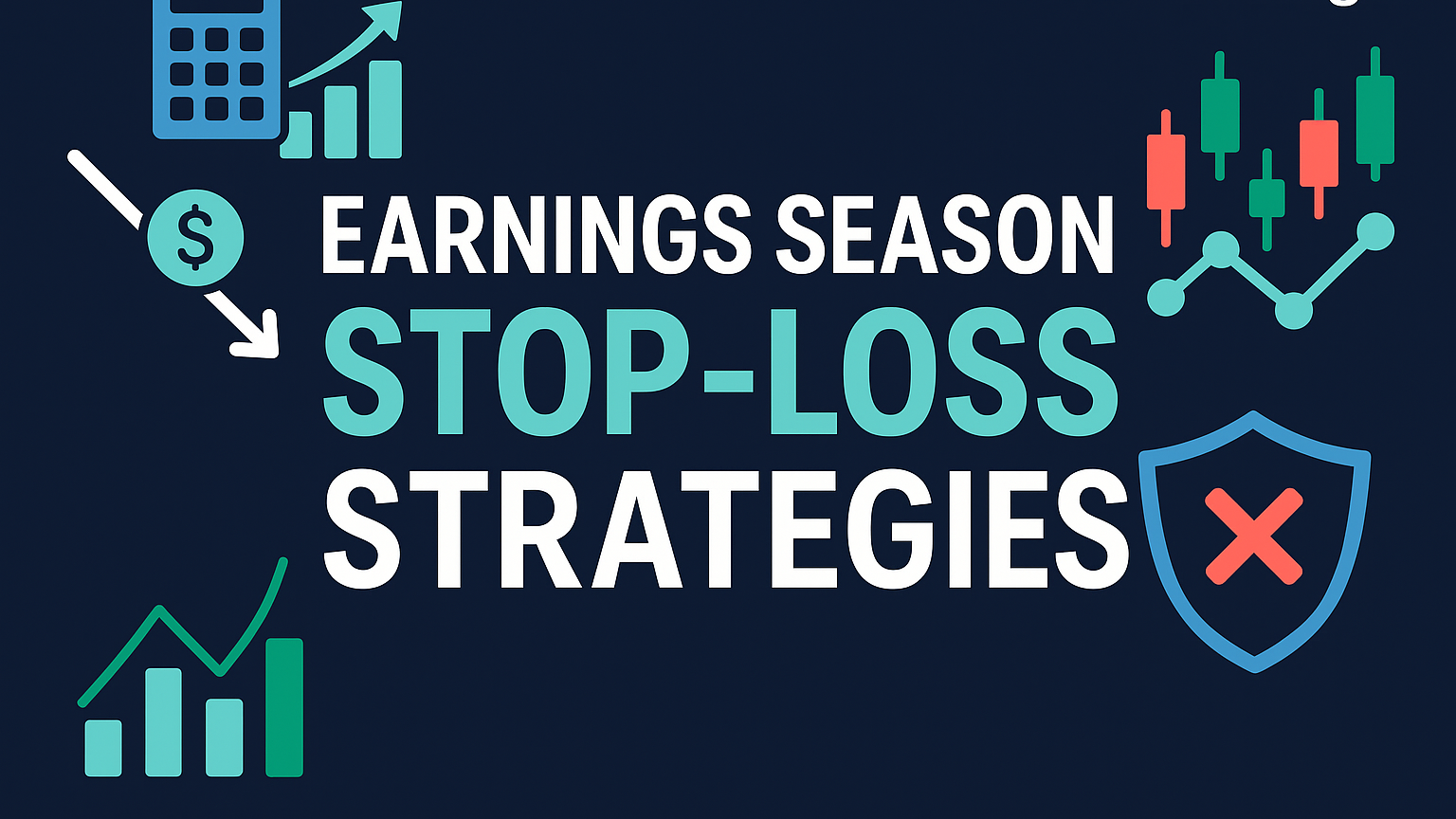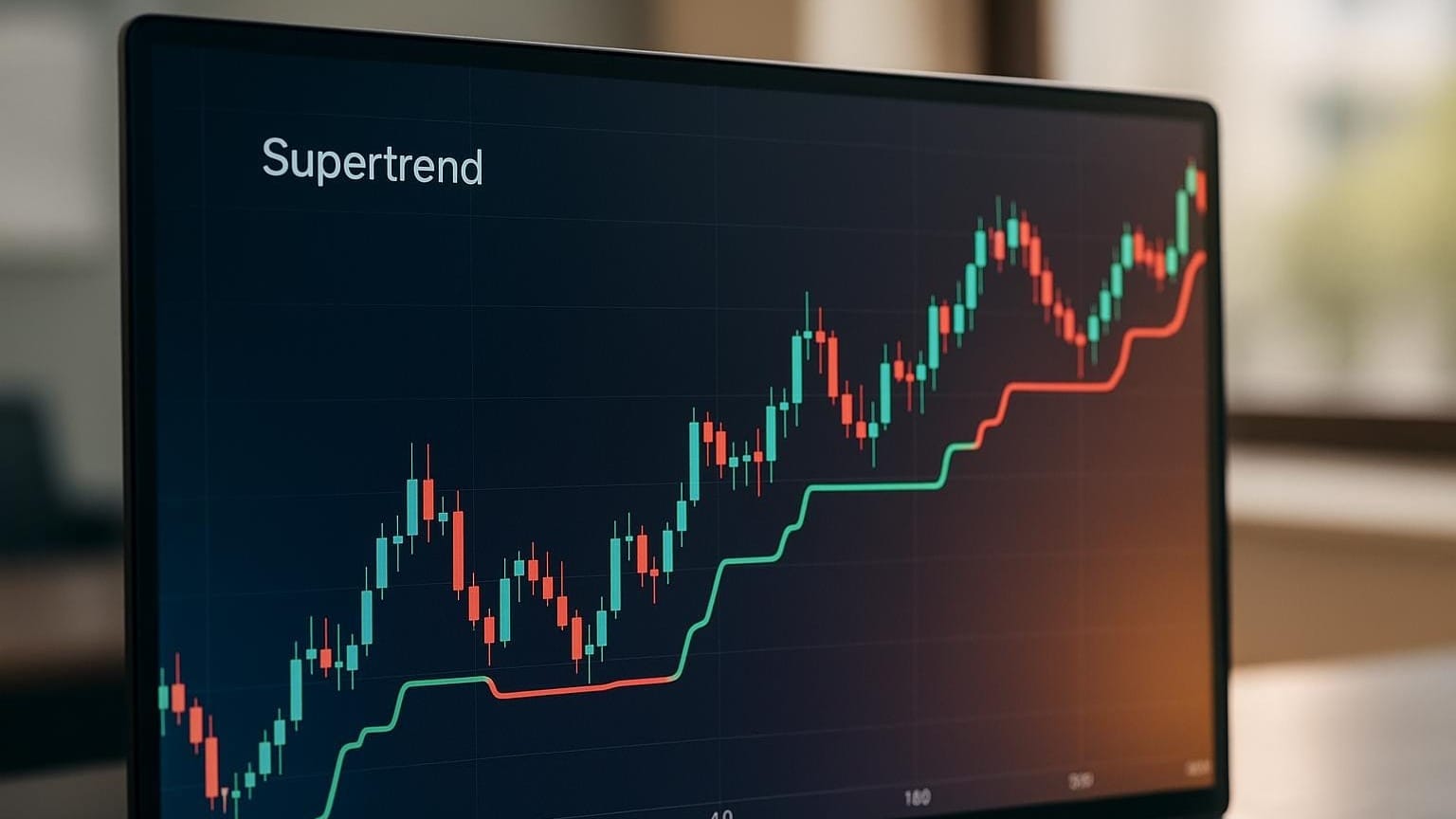Explore the challenges and solutions of using volume indicators in trading to make informed decisions and improve market analysis.
Volume indicators are essential for understanding market activity, but they come with challenges like false signals, manipulation, and lack of context. These issues can lead to poor trading decisions if not addressed. Here’s a quick summary of the key problems and solutions:
Key Problems:
- Lack of Context: Volume spikes don’t explain why they occur (e.g., news, institutional trades, or algorithms).
- Manipulation: Tactics like wash trading, spoofing, and dark pools distort volume data.
- False Signals: Indicators often lag, struggle with gaps, and misinterpret thin trading periods.
Solutions:
- Combine Tools: Use volume indicators with price action and trend analysis for better confirmation.
- Historical Context: Compare current volume to averages (e.g., 20-day) and track patterns during key events.
- Advanced Platforms: LuxAlgo provides real-time alerts, divergence detection, and AI Backtesting to refine strategies.
By pairing volume analysis with other methods and leveraging advanced tools, you can reduce errors and improve trading decisions.
Best 3 Volume Indicators That Filter Out All False Trade Signals
Common Problems with Volume Indicators
Volume indicators can provide traders with useful insights into market activity, but they also come with several challenges that can complicate decision-making. Recognizing these limitations is essential for building a more balanced trading strategy that doesn’t overly depend on volume data.
Missing Context Behind Volume Changes
Volume indicators tell you what’s happening, but they don’t explain why it’s happening. For instance, a sudden spike in volume might grab your attention, but the indicator won’t clarify whether it’s due to institutional buying, retail panic selling, an earnings announcement, or algorithmic trading activity.
This lack of context can make interpretation tricky. A volume spike that looks bullish at first glance might actually signal large-scale selling or automated portfolio rebalancing.
The situation becomes even murkier during events like earnings releases or major news announcements. In these cases, volume spikes often blend fundamental trading with speculative moves, leaving traders with incomplete information.
To add to the complexity, after-hours trading can distort volume analysis. Many volume indicators don’t account for extended trading sessions, creating gaps in the data. As a result, trading activity during regular hours might appear more or less significant than it actually is. For context, see this overview of after-hours trading mechanics.
And it’s not just about misinterpreting volume sources — traders also have to grapple with intentional market distortions.
Market Manipulation Issues
Volume data is particularly vulnerable to manipulation, which can lead to misleading signals. Large institutional players and high-frequency trading firms often employ tactics that distort volume indicators.
One common tactic is wash trading, where an entity buys and sells the same security to artificially inflate trading activity. For background, review the SEC’s primer on market-manipulation practices.
Then there’s spoofing, where traders place large orders they have no intention of executing. This creates the illusion of heightened supply or demand, influencing volume-based algorithms and misleading retail traders who rely heavily on volume data. Learn more about spoofing enforcement and definitions.
Another factor complicating volume analysis is the rise of dark pools — private exchanges where institutional investors execute large trades without revealing their activity to the public. See the SEC’s explanation of alternative trading systems and dark pools.
Algorithmic trading adds yet another layer of distortion. High-frequency trading systems can generate massive volume in milliseconds, creating artificial spikes that have little to do with genuine market sentiment. These surges can trigger false signals in volume-based strategies, leading traders astray.
These examples underscore the importance of using volume indicators alongside other tools to create a more complete analysis.
False Signals and Delayed Data
In volatile markets, volume indicators often generate false signals due to rapid price swings and inherent delays in their calculations.
Lagging data is a significant issue. Most volume indicators rely on completed time periods to calculate values, meaning they show past activity rather than what’s currently unfolding. In fast-moving markets, this delay can cause traders to act after the best opportunity has already passed.
Periods of thin trading can also create misleading signals. A small uptick in volume during these times might appear significant, triggering buy or sell signals that wouldn’t occur during busier trading hours.
Volume indicators also struggle with gap openings and limit moves. When a stock gaps up or down significantly at market open, the previous session’s volume data becomes far less relevant. Similarly, when stocks hit daily trading limits, volume may drop — not because of reduced interest, but because trading activity is restricted. For details, see CME’s note on price-limit rules.
Another challenge is the normalization problem. Different stocks have vastly different average volumes, making it difficult to apply a one-size-fits-all approach to volume analysis. High volume for a small-cap stock might be considered ordinary for a large-cap stock, leading to inconsistent signals across different market segments.
To navigate these challenges, traders should pair volume indicators with other analytical tools and advanced trading platforms for a more comprehensive approach.
Solutions and Best Practices for Volume Indicators
Volume indicators can be tricky to rely on by themselves, but traders can overcome their limitations with the right strategies. The secret? Building a more complete analytical framework that combines volume data with other tools for better accuracy and fewer false signals.
Combine Volume with Other Analysis Tools
Volume data becomes much more effective when paired with tools like price action analysis, trend indicators, and market structure insights. Instead of acting solely on volume signals, successful traders use them alongside other methods to confirm their setups.
For example, a price breakout above resistance is far more convincing when it's backed by a surge in volume and a strong bullish candlestick pattern. On the flip side, a breakout with low volume — especially if it's below the 20-day average — often signals weakness and a higher chance of reversal. If you prefer moving-average confirmation, review a primer on the moving average concept.
Moving averages are another great companion to volume indicators. When a stock breaks above its 50-day moving average with a significant increase in volume compared to its historical levels, the chances of a sustained upward move improve dramatically.
Price action patterns also add crucial context. A volume spike during a doji candlestick might indicate indecision in the market, but the same spike during a hammer pattern at a key support level could suggest strong buying interest. For terminology, see doji and hammer candlesticks.
LuxAlgo provides a streamlined, multi-layered workflow. The Price Action Concepts toolkit combines automatic pattern detection with volumetric order blocks, while the Signals & Overlays toolkit integrates multiple signal algorithms with volume data.
Once you've combined volume with other tools, the next step is to dive into historical volume patterns for deeper insights.
Track Historical Volume Patterns
Looking at volume in context — rather than just raw numbers — can reveal a lot about market activity. Comparing current volume to historical averages helps traders separate routine fluctuations from meaningful moves.
A common benchmark is the 20-day average volume. If current volume exceeds this average by 50% or more during a breakout, the move is generally more credible than similar price action with below-average volume. This comparison helps traders avoid weak signals that often lead to failed trades.
Seasonal volume patterns are also worth noting, especially in sectors with predictable cycles. For instance, tech stocks often see higher trading volumes during earnings season, while retail stocks experience spikes before the holiday shopping quarters. Recognizing these patterns can help traders avoid overreacting to volume surges that are entirely expected.
Time-of-day volume analysis is another useful tool. The first and last hours of the trading session usually have the highest volume, making breakouts during these periods more significant than those that happen during the quieter midday hours. Paying attention to these intraday patterns can help traders time their entries and exits more effectively.
Historical volume tracking becomes even more critical during news events and earnings releases. Comparing current volume spikes to those from past, similar events for the same stock can help traders judge whether the market's reaction is reasonable or exaggerated.
With these insights in hand, advanced trading platforms can take your volume analysis to the next level.
Use Advanced Trading Platforms
Advanced platforms are a game-changer for traders looking to overcome the limitations of basic volume analysis. They offer real-time data, customizable alerts, and integrated tools that make analysis faster and more precise.
Real-time volume alerts allow traders to act quickly on developing opportunities. These alerts can be customized to trigger when volume surpasses specific thresholds relative to historical averages, ensuring you don’t miss important moves.
LuxAlgo’s Oscillator Matrix pairs money-flow tools with real-time divergence detection. This helps cut through false signals from volume spikes by identifying excessive one-sided market activity that often precedes reversals.
The AI Backtesting Assistant lets traders test volume-based strategies across multiple assets and timeframes, providing evaluations of what works best under current market conditions. This helps traders avoid overfitting while fine-tuning for today’s markets.
For those who prefer familiar charting environments, seamless integration with TradingView ensures these capabilities work smoothly without requiring traders to switch platforms.
LuxAlgo also provides live support and an active user community, where traders can access shared strategies, real-world case studies, and expert advice.
Finally, customizable indicators allow traders to tailor their volume analysis to fit their style and the specific market they’re trading.
Volume Indicator Comparison
Volume indicators play a key role in trading analysis, offering unique insights into market behavior. By understanding the strengths and limitations of each indicator, traders can select the most effective approach for specific market conditions. These indicators process volume data in different ways, which means their performance varies depending on the trading scenario.
On-Balance Volume (OBV) is calculated by adding volume on days when prices close higher and subtracting it on days when prices close lower. This running total helps identify divergences between price and volume. OBV is particularly good at spotting early signs of trend weakness — like when prices hit new highs but the indicator fails to confirm the move. However, it tends to underperform in sideways or choppy markets. Learn the basics of On-Balance Volume.
Volume Weighted Average Price (VWAP) determines the average price of a security, weighted by trading volume, over a single session. Institutional traders often use it to gauge intraday support and resistance levels. While VWAP works well in highly liquid markets with consistent trading activity, it becomes less reliable during low-volume periods or when analyzing longer-term trends since it resets daily. For a primer, see what VWAP measures.
Accumulation/Distribution (A/D) combines price and volume by analyzing where the closing price falls within the day's range. For instance, if a stock closes near its high on strong volume, it indicates accumulation, suggesting buying pressure. This indicator is useful for uncovering underlying buying or selling activity but can be skewed by large gap openings. See an overview of the A/D indicator.
Money Flow Index (MFI) is a volume-weighted oscillator that integrates price and volume momentum to identify overbought or oversold conditions. While it excels at spotting momentum shifts, its signals often require confirmation in strongly trending markets to avoid false readings. Learn more about the Money Flow Index.
Volume Indicator Comparison Table
| Indicator | Strengths | Weaknesses | Best Market Conditions | LuxAlgo Integration |
|---|---|---|---|---|
| On-Balance Volume (OBV) | Highlights price-volume divergences; Easy to use; Effective in trending markets | Struggles in sideways markets | Trending markets with steady volume patterns | Available in free library; Enhanced with Price Action Concepts for pattern confirmation |
| Volume Weighted Average Price (VWAP) | Institutional benchmark; Tracks intraday support/resistance; Reflects volume distribution | Limited to intraday analysis; Less effective in low-volume periods; Resets daily | High-volume, liquid markets during active trading hours | Integrated with Signals & Overlays; Real-time alerts available |
| Accumulation/Distribution (A/D) | Accounts for price range and volume; Detects buying/selling pressure | Susceptible to gap openings | Markets with steady trading patterns | Enhanced through the Oscillator Matrix with divergence detection |
| Money Flow Index (MFI) | Combines price and volume momentum; Flags overbought/oversold conditions | Needs confirmation in strong trends | Volatile markets with clear momentum shifts | Available with customizable parameters; AI Backtesting for optimization |
The success of volume indicators relies on accurate data. While they are often effective at predicting volatility, they can struggle after sharp price moves or in low-volume environments. For example, rising prices paired with declining volume often signal weakening trends and potential reversals [Investopedia].
LuxAlgo enhances the utility of volume indicators by addressing their common limitations through its integrated capabilities. The Oscillator Matrix combines multiple volume-based signals with real-time divergence detection, reducing the risks of relying on a single indicator. Additionally, the AI Backtesting Assistant allows traders to test various volume indicators across different market conditions, helping them identify the most suitable tools for their strategies.
This comparison highlights how LuxAlgo’s approach refines volume analysis, paving the way for more informed and effective trading decisions.
Using LuxAlgo for Volume Analysis
LuxAlgo’s Indicator Library and Toolkits
At the heart of LuxAlgo’s approach is its indicator Library, which includes a wide array of free, open-source tools available across major charting platforms. These provide advanced volume-analysis features that go beyond the limitations of standard indicators.
The Price Action Concepts (PAC) toolkit is a game-changer for volume analysis. With auto-pattern detection and volumetric order block functionality, PAC highlights volumes tied to institutional activity. This helps uncover hidden support and resistance levels, making it easier to identify optimal entry and exit points.
Meanwhile, the Oscillator Matrix (OSC) toolkit offers real-time divergence detection and money flow analysis. By tracking the relationship between price movements and underlying volume trends, the OSC flags inconsistencies where volume patterns contradict price action.
What makes LuxAlgo stand out is how these toolkits complement each other. For instance, a trader noticing a volume divergence using the Oscillator Matrix can use the Price Action Concepts toolkit to verify if a volumetric order block is present at the same level. Additionally, LuxAlgo enhances strategy development with backtesting tools to refine trading decisions.
AI Backtesting for Strategy Testing
Traditional backtesting methods often struggle with volume-based strategies, as they rely on manual processes that can introduce bias or miss critical patterns. LuxAlgo’s AI Backtesting Assistant provides a web platform that evaluates and optimizes strategies across tickers and timeframes.
The AI system processes large amounts of data to uncover patterns that might go unnoticed during manual analysis. This allows traders to quickly test the effectiveness of different volume strategies and refine their entry and exit criteria based on historical performance.
This approach also addresses overfitting by testing strategies across diverse market conditions and timeframes, helping ensure durability in live trading.
Community Support and Learning Resources
Volume analysis can be daunting, even for seasoned traders, but LuxAlgo bridges this gap with community support and educational resources. Tutorials and live support help traders master volume indicators and avoid common mistakes.
Conclusion
Volume indicators play a crucial role in technical analysis, but their limitations can’t be ignored. Issues like lack of context, susceptibility to manipulation, and misleading signals can throw strategies off track if not addressed.
Relying exclusively on volume indicators can be risky. For example, sudden volume spikes in low-liquidity markets can lead to unexpected reversals or slippage. That’s why it’s critical to confirm signals using multiple indicators.
LuxAlgo helps cut through the noise by identifying reliable signals. Its toolkits — Price Action Concepts for analyzing volumetric order blocks and the Oscillator Matrix for spotting real-time divergences — offer traders a more refined view. When paired with AI Backtesting, these capabilities allow strategies to be tested across diverse market conditions.
To improve decision-making and reduce false signals, integrating volume analysis with other methods is key. Combining volume indicators with tools like price-action patterns, trend indicators, and support/resistance levels helps traders anticipate market movements with greater accuracy and manage risk more effectively.
For U.S. traders, the takeaway is clear: consider volume within its broader context, confirm signals with multiple tools, and leverage advanced platforms to enhance your trading strategies.
FAQs
How can traders identify real volume spikes versus those caused by market manipulation?
To spot authentic volume spikes, traders need to consider the bigger picture of the market. Genuine spikes usually align with major events like breaking news, earnings announcements, or economic updates that logically drive higher trading activity. On the other hand, manipulated spikes often emerge out of nowhere, lacking any clear external trigger, and may coincide with unusual price behavior.
Pay attention to patterns such as sharp volume increases that don’t align with market fundamentals or spikes occurring during critical phases like accumulation or distribution. These could indicate either institutional involvement or potential manipulation. Staying informed and closely analyzing the interplay between price and volume can help traders sift through misleading signals and steer clear of potential pitfalls in the market.
How can analyzing historical volume patterns improve trading strategies?
Analyzing historical volume patterns can reveal a lot about market trends and trader behavior, offering a clearer path to refining trading strategies. For example, when volume rises during an uptrend, it often signals strong buying interest. On the flip side, if volume starts to drop, it might suggest the trend is losing steam and a reversal could be on the horizon. Volume spikes during critical moments — like breakouts or breakdowns — can also confirm these moves, helping traders steer clear of false signals.
By digging into historical data, traders can spot long-term trends and recurring short-term patterns. This deeper understanding makes it easier to pinpoint ideal entry and exit points, improving timing and boosting the chances of making successful trades.
How can platforms like LuxAlgo address the challenges of using traditional volume indicators?
Platforms like LuxAlgo address the shortcomings of traditional volume indicators by providing capabilities that analyze market data in real time. By blending insights from price action, volume trends, and institutional activity, these tools give traders a clearer picture of market behavior, making it easier to confirm trends and spot opportunities with precision.
What sets LuxAlgo apart is its customizable features and AI-driven analysis. These capabilities allow traders to adjust to shifting market conditions, enabling quicker, data-backed decisions and minimizing the uncertainty that often comes with relying solely on traditional volume indicators.
References
LuxAlgo Resources
- Volumetric Toolkit
- Price Action Concepts (PAC)
- Signals & Overlays – Alerts (Docs)
- AI Backtesting Assistant
- Volume Forecasting
- Trend Lines
- PAC – Market Structures (Docs)
- Reversal Candlestick Structure
- Order Breaker Blocks
- Oscillator Matrix
- TMOs – Real-Time Divergences
- Sessions
- Support & Resistance (Dynamic)
- Support/Resistance with Breaks
- Money Flow Profile
External Resources
- After-Hours Trading Explained
- SEC: Market Manipulation (incl. Wash Trading)
- CFTC: Spoofing Overview
- SEC: Alternative Trading Systems & Dark Pools
- CME: Price-Limit Rules
- Moving Average (Overview)
- Doji Candlestick
- Hammer Candlestick
- Volume-Weighted Average Price (VWAP)
- Why Trading Volume Matters
- TradingView








